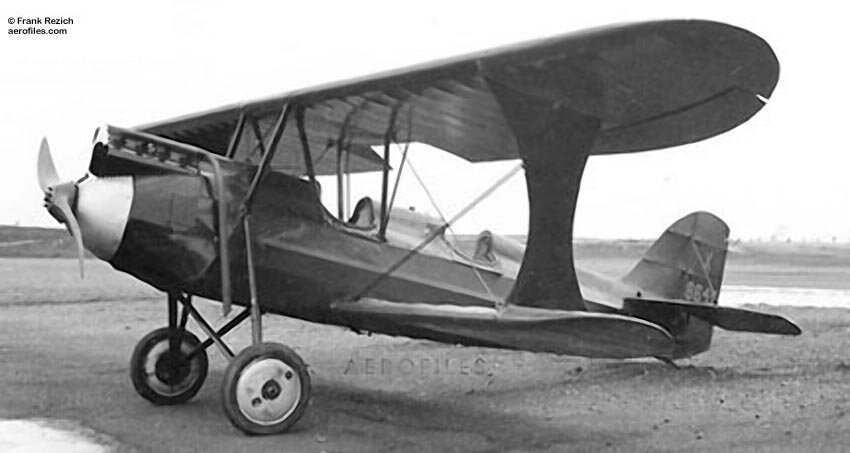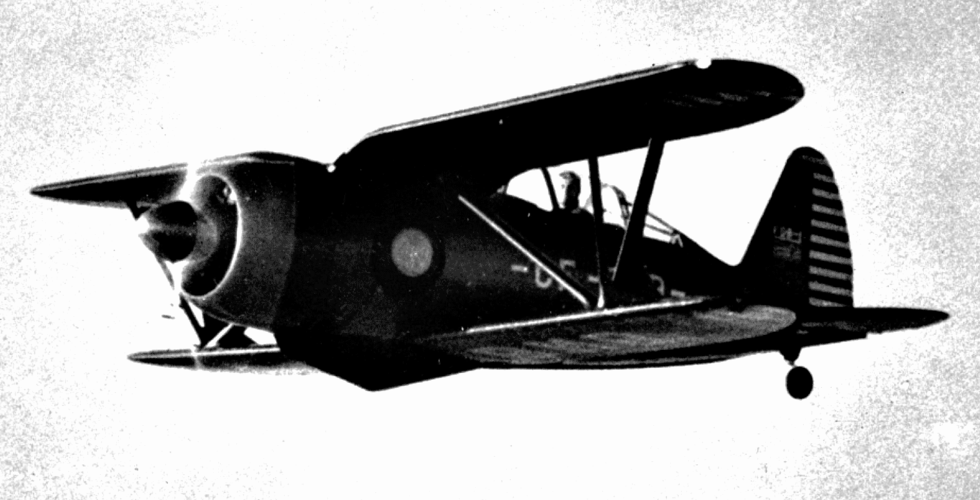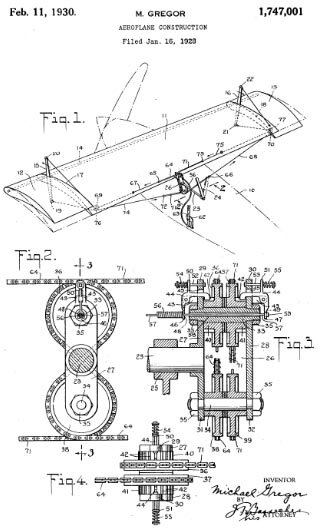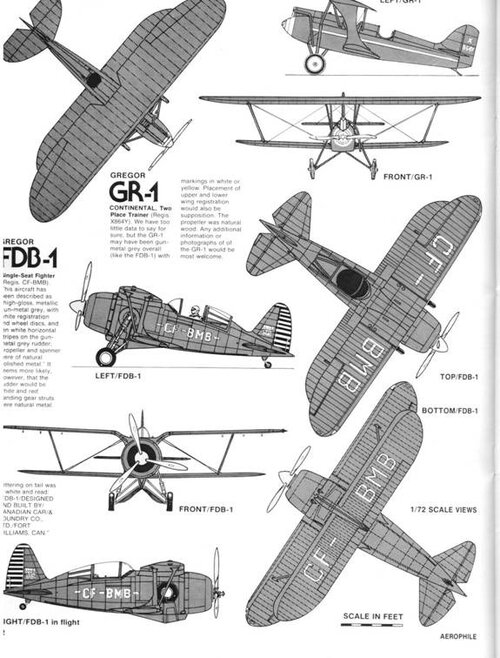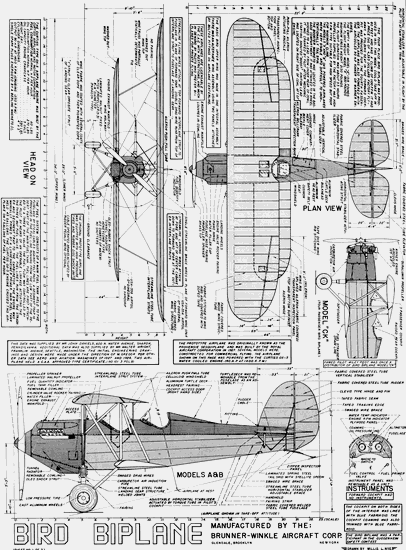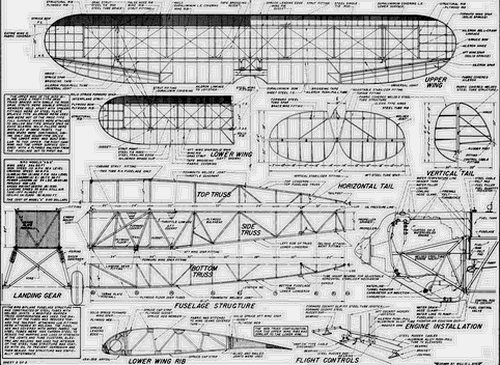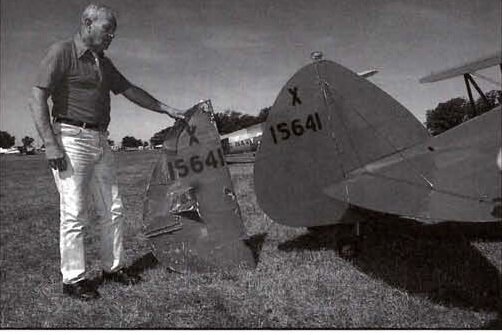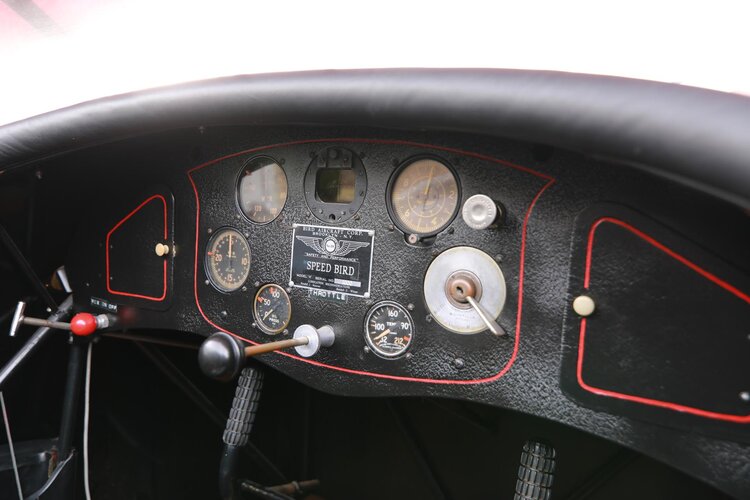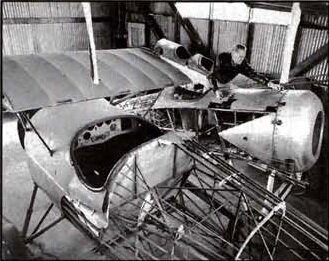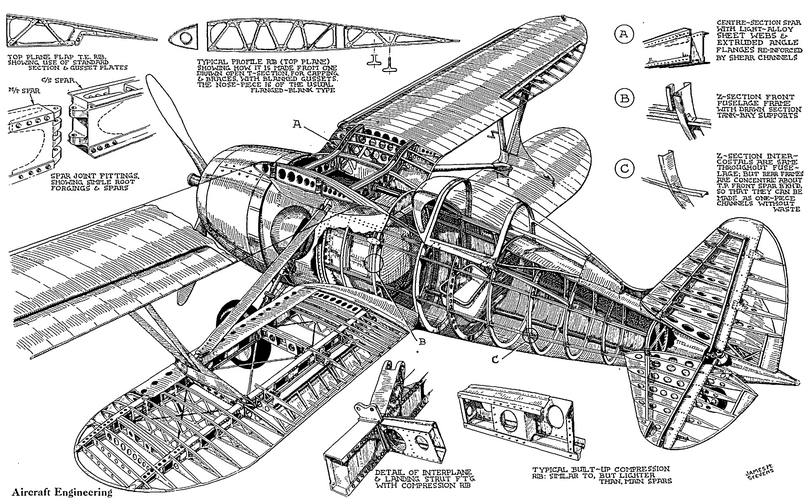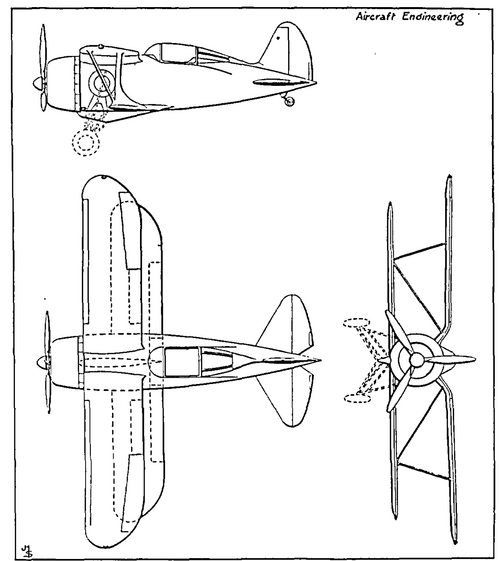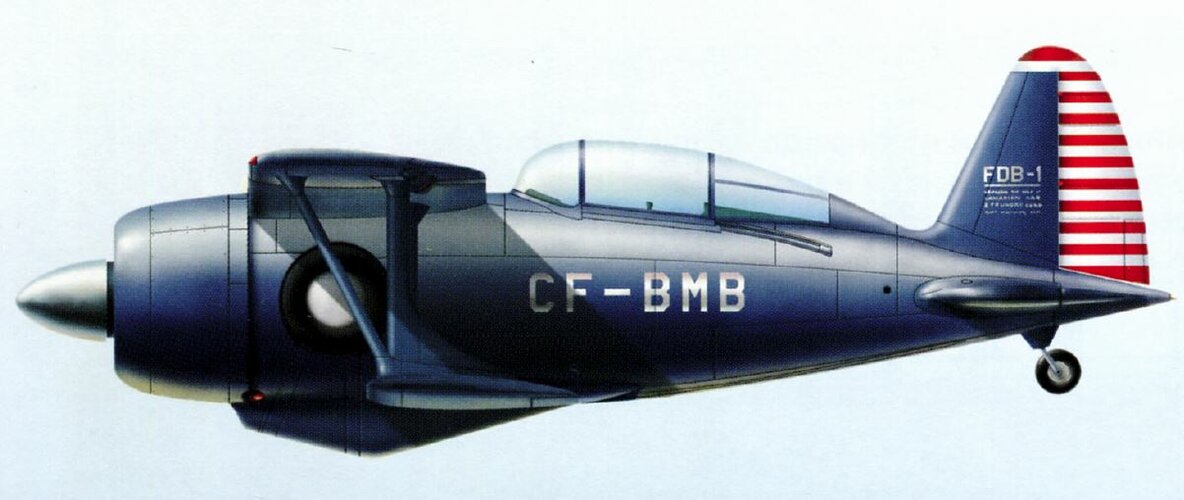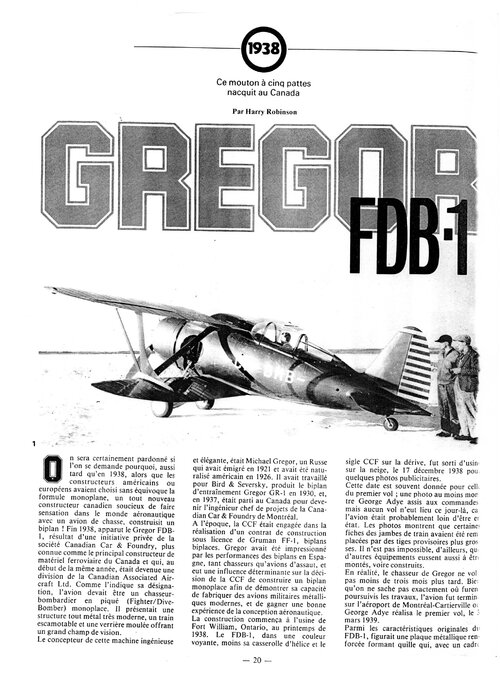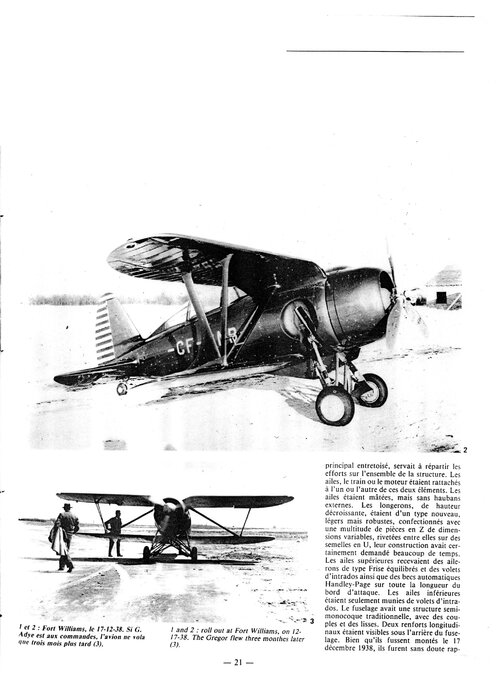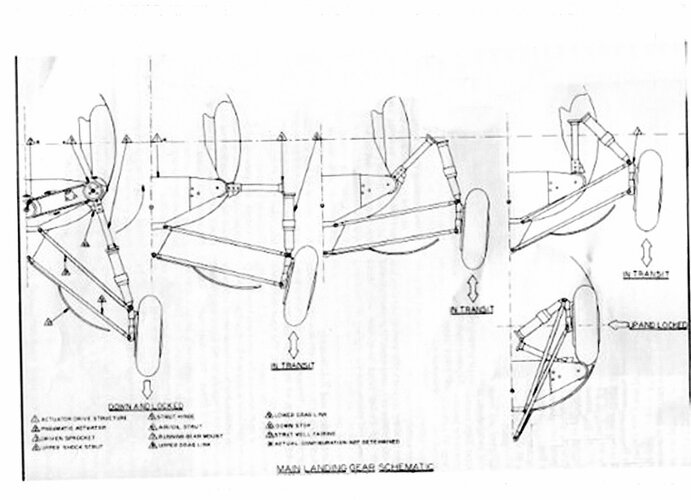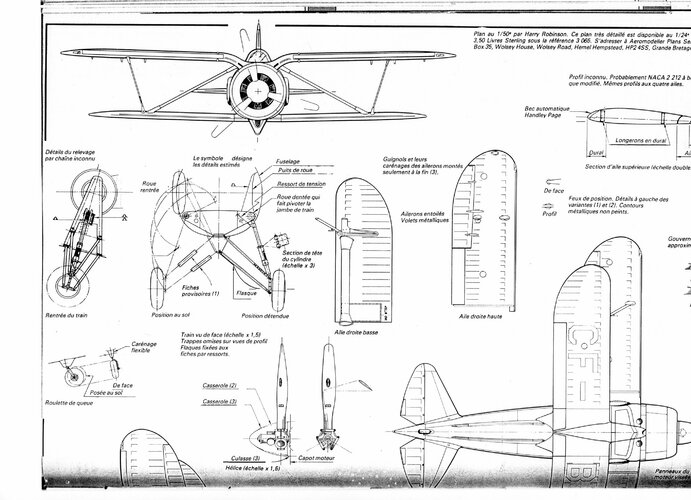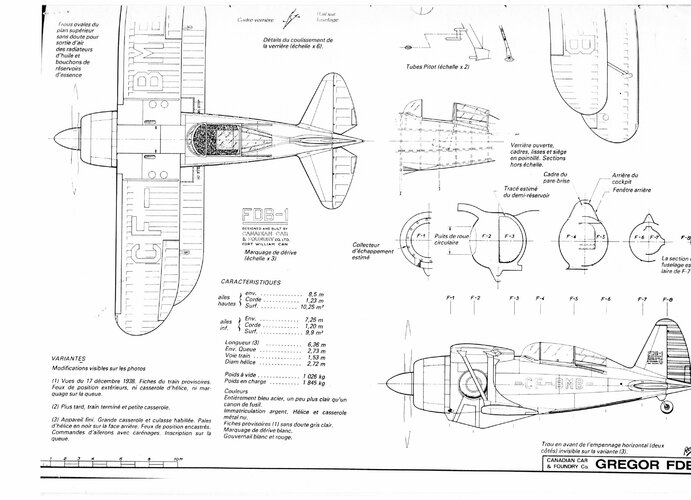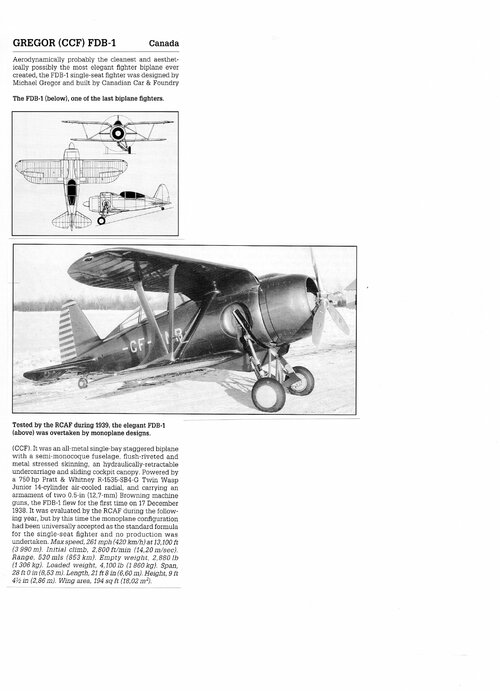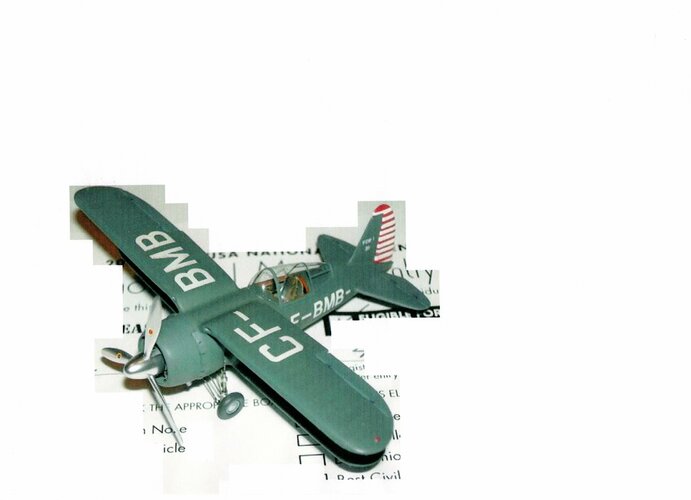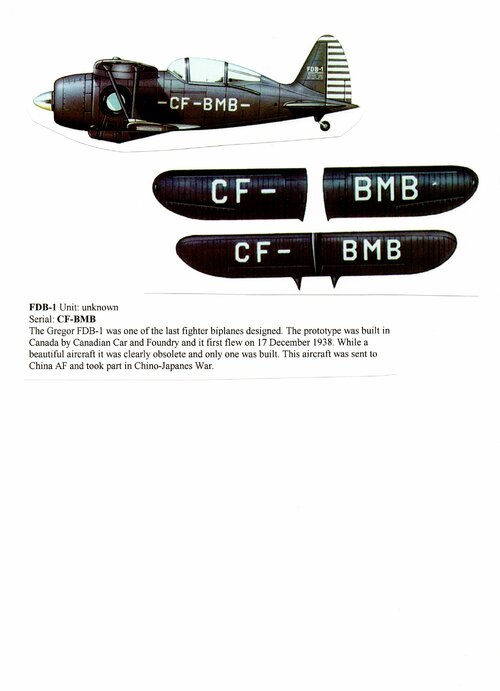Some forum members may be interested in the early assistant design work of Mikheil Grigorashvili prior to his leaving Russia.
Nikolai Vasilyevich Rebikov's Rossiya Series
The earliest of Grigorashvili's assistant works are on the
Rossiya series with design lead by NV Rebikov. Russian sources on
Rossiya 'A' do not mention Grigorashvili but some modern Georgian sources do. (The latter sources can be a bit garbled and tend towards being overly nationalistic.) If Grigorashvili
was directly involved in the design of
Rossiya 'A', it would have been in a support role - as on
Rossiya 'B'.
BTW, Grigorashvili also acted as test pilot for the
Rossiya 'B'. When that prototype 'turned turtle' on landing, Rebikov held Grigorashvili responsible for this accident - souring that relationship. [1]
Rebikov
Rossiya 'A': 1910 Farman III biplane
-
Rossiya 'A': Orig. 1 x 40 hp Renault pusher
-
Rossiya 'A': Mod., 1 50 hp Gnome, span 10.50
Rebikov
Rossiya 'B': 1910 Bleriot XI monoplane copies, x 5
- : 1 x 25 hp Anzani 3-cylinder fan tractor engine, span 7.50 m
-- Built by First Russian Aeronautics Company - S.S. Shchetinin and Co.
-
Rossiya 'B': aka
Bi-Kok [2]
Pervoye Rossiyskoye Tovarishchestvo Vozdukhoplavaniya S.S. Shchetinin i Ko
After the outbreak of WWI, Grigorashvili was employed at the First Russian Aeronautical Company - S.S. Shchetinin and Co. in Petrograd. There, he worked under chief designer Dmitry Pavlovich Grigorovich. However, it is not clear whether Grigorashvili played any direct role in the design of that firm's series of 'M' model flying boats.
F.F. Melzer i Ko, Petrograd
From assistant to D.P. Grigorovich, Mikheil Grigorashvili took a position as chief engineer for an new aviation section of F.F. Melzer i Ko. Before the war, F.F. Melzer was famous as a bespoke furniture factory serving the nobility and the Imperial family. After 1914, the F.F. Melzer furniture factory was turned over to war work. [3] At Melzer, Grigorashvili developed his 'G' system of wooden propellers. In Autumn 1916, the
Voyennoye ministerstvo [4] issued an order for 3,000 Grigorashvili propellers from Melzer. How many 'G' type propellers were delivered to the IVVF (Imperial Air Service) prior to the 1917 Revolution is unknown.
During Mikheil Grigorashvili's tenure at F.F. Melzer i Ko, examples were produced of a flying boat fighter to the design of Ye.R. Engel. [5] This aircraft was a parasol monoplane pusher which was also to be capable of operating on skis during the Winter. In July 1916, the prototype Engels I boat was completed and tested at Petrograd. The second aircraft - the Le Rhône-powered Engels M.II - was, by most accounts, modified from the original prototype. This Engels M.II was dispatched to the Caspian Sea for trials from the Baku Naval Aviation School. On 05 Dec 1916, the aircraft suffered a structural failure (possibly the result of sabotage). The right rear box spar collapsed in flight with
Shtabs-kapitan Engels being killed.
Despite the death of the inventor, F.F. Melzer i Ko persisted with development. Two prototypes of the M.III production version were built - the first flying in August 1917. [6] The Russian Ministry of the Navy was informed that Melzer was capable of building 300 x production versions of this flying boat fighter (an estimate which was later scaled back to x 200). On 27 April 1917, an order for 60 M.IIIs was placed but, by September or October 1917, all work on these flying boat fighters seems to have been halted. The question is: With Yevgeni Engels dead, who at F.F. Melzer i Ko was capable of continuing this project?
With no genuine evidence to back the claim, I would suggest that chief engineer, Mikheil Grigorashvili, was the person most likely to have pursued the Engels design. Through his exposure to DP Grigorovich at S.S. Shchetinin i Ko, Mikheil Grigorashvili would have been very familiar with the design of small, pusher flying boats. I'm not suggesting that there is any connection between the Grigorovich boats and the Engels types. [7] Rather that Grigorashvili would be fully aware of the issues of preparing and water-proofing flying boat hulls. I realize that this is completely speculative (and bereft of any direct evidence) but I wanted to throw the suggestion of a Grigorashvili connection out there.
Engels M.I - 1916 single-seat fighter hydroplane, x 1
- M.I : Strut-mounted pusher above parasol, near T-tail
- M.I : 1 x 100 hp Gnome
Monosoupape 9B-2, span 9.00 m
Engels M.II - 1916 single-seat fighter hydroplane, x 1
- M.II : Modified and re-engined pusher M.I prototype
- M.II : 1 x 120 hp Le Rhône 9Jb rotary, span 9.00 m
-- M.II development funded by the Ministry of the Navy
Engels M.III - 1917 single-seat fighter hydroplane, x 2
- M.III: Modified and re-engined pusher M.I prototype
- M.III: 1 x 120 hp Le Rhône 9Jb rotary, span 9.00 m
- M.III: Orders for x 60 aircraft* on 27 April 1917
If Mikheil Grigorashvili was connected with the Engels M.III flying boat, that was his last direct connection to aviation in Russia. In the wake of the October Revolution, Grigorashvili 'returned' to Georgia. Although of Georgian parentage, Grigorashvili had been born in Derbent, Dagestan. While he was still young, his mother moved her children to St. Petersburg where Mikheil - or Mikhail to his Russian friends - went to engineering school. When he moved to Tbilisi in early 1918, it was his first time living in Georgia. Grigorashvili found employment as an engineer with the Ministry of Railways of the new Democratic Republic of Georgia in early 1918. But these were unsettled times.
The Georgian economy was stagnant. Worse, in May 1920, Bolsheviks staged a
coup d'état in Tblisi. That attempted coup failed but, in February of 1921, the Red Army invaded and easily crushed the People's Guard of Georgia. On the 25 February, the Red Army occupied Tblisi. Mikheil Grigorashvili fled abroad. He would re-emerge later in 1921 as Michael Gregor working as an engineer for the Gallaudet Aircraft Corporation on Chepiwanoxet Island, Rhode Island. [8]
___________________________________________________
[1] See:
http://www.airwar.ru/enc/other1/bikok.html
[2] The
Bi-Kok was designed in hope of military contracts. It was intended to be armed and armoured (the name
Bi-Kok being derived from the medieval
bicoque helmet).
[3] The
Vintage Wings article mentions "the aviation factory of R.F. Meltzer". Roman Meltzer ('Architect of the Imperial Court') was actually the son of the furniture maker, Fyador Meltzer.
[4] Literally the 'War Ministry', generally known as the Ministry of War of the Russian Empire.
[5] Staff Captain Engels name get routinely garbled because of his first name. His full name was Yevgeni Robertovich Engels. Because of the Russian letter 'yeh', that first name can also be transliterated as Evgeny. So, E.R. Engels is also correct. In the same article, Wikipedia has him as both 'Y.R. Engels' and 'Y.E. Engels'. Elsewhere, the even less explicable 'R.E. Engels' is seen.
[6] The test flight was made by naval pilot
Poruchik NA Yakovitsky who was then an instructor at the Petrograd Aviation School. During the Civil War, Lt. Yakovitsky would fly a Nieuport 17 with the 1st Naval IAO on the Severodvinsk front.
[7] Although, in 1921, the second M.III did fly at Samara fitted with stabilizer floats taken from a Grigorovich M-5.
[8] This firm had been noted for its complex and advanced Gallaudet Drive propeller system. It may have been that engineering challenge which drew Gregor to Edson Gallaudet.[/B]

